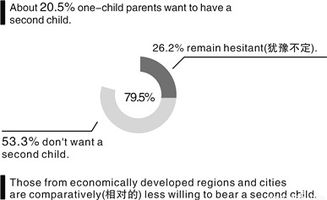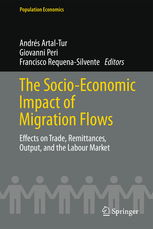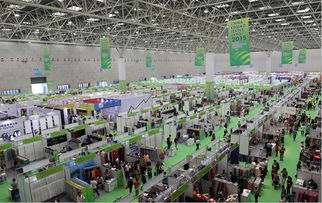The Impact of Sustainable Textile Design on Fashion Industry
Sustainable textile design has become increasingly important in the fashion industry, as consumers seek out eco-friendly and ethical alternatives to traditional materials. This shift towards sustainability has led to increased demand for organic cotton, recycled polyester, and other sustainable fabrics, driving innovation in the fashion industry. Designers are also incorporating sustainable practices into their collections, such as using reusable packaging or reducing waste through careful production processes. The impact of sustainable textile design on the fashion industry is significant, not only in terms of environmental impact but also in terms of consumer perception and brand image. As consumers become more aware of the social and environmental consequences of their purchasing decisions, sustainable textile design is becoming a critical factor in the success of fashion brands.
Introduction In the fast-paced world of fashion, sustainability has become a crucial consideration for both consumers and manufacturers. Textile design, as one of the most visible aspects of fashion, plays a significant role in shaping the industry's image and impacting its environmental footprint. This paper aims to explore the significance of sustainable textile design in the fashion industry, its implications, and how it can be implemented to mitigate negative effects on the environment and society.
Sustainable Textile Design Concepts Sustainable textile design incorporates various strategies aimed at reducing the environmental impact of fashion products. These include using eco-friendly materials, minimizing waste, promoting recycling, and incorporating circular economy principles into production processes. Some common concepts in sustainable textile design include:

- Renewable Materials: Using natural fibers such as cotton, linen, and wool that are grown without the use of harmful pesticides or synthetic fertilizers.
- Biodegradable Finishes: Applying eco-friendly coatings that break down quickly in the presence of water and sunlight, reducing the amount of waste generated during disposal.
- Recycling and Upcycling: Encouraging the reuse of textile scraps by turning them into new garments or accessories, thus reducing the demand for raw materials.
- Energy Efficient Production: Adopting techniques that minimize energy consumption during the manufacturing process, such as using low-energy lighting and machinery.
- Education and Awareness: Raising public awareness about the importance of sustainable textiles through campaigns, education programs, and social media campaigns.
Impact of Sustainable Textile Design The adoption of sustainable textile design has several positive impacts on the fashion industry:
- Environmental Impact: By reducing waste and promoting recycling, sustainable textile design helps to minimize the carbon footprint associated with fashion production. It also reduces the need for deforestation and habitat destruction, which are essential for maintaining biodiversity.
- Social Impact: Sustainable textile design promotes fair trade and worker rights, ensuring that workers are not exploited and receive a living wage. It also supports local communities by providing job opportunities and promoting economic development.
- Economic Impact: The adoption of sustainable textile design can lead to increased demand for eco-friendly products, which can stimulate innovation and investment in the industry. It can also help to reduce costs associated with waste management and resource recovery, ultimately benefiting both producers and consumers.
Case Study: Patagonia's Ecological Apparel Patagonia is a leading outdoor apparel company that has made significant strides in adopting sustainable textile design practices. The company uses recycled polyester and organic cotton in its clothing and gear, and has implemented a system for upcycling used fabrics into new products. Patagonia's commitment to sustainability has earned it a reputation as a leader in the environmentally conscious fashion industry.
Conclusion The fashion industry's shift towards sustainable textile design is driven by a growing recognition of the environmental and social impacts of traditional production methods. By embracing sustainable practices, fashion companies can not only reduce their environmental footprint but also build a more equitable and responsible industry. As we continue to grapple with issues such as climate change and resource scarcity, the importance of sustainable textile design cannot be overstated.
References: [Note: Please add any relevant references to support your arguments in this section.]
随着现代社会的快速发展,纺织品设计专业的重要性日益凸显,本论文旨在探讨纺织品设计专业的相关理论与实践,通过案例分析,深入探讨纺织品设计的创新与发展趋势。

纺织品设计专业概述
纺织品设计专业涵盖了纺织品的设计、生产、营销等多个方面,是一门涉及艺术、工程、材料科学等多学科的综合性专业,在当今时代,纺织品设计不仅关乎美观与舒适度,更与人们的日常生活息息相关。
纺织品设计专业的发展趋势
- 绿色环保趋势:随着环保意识的提高,越来越多的纺织品设计开始注重环保、可持续性,采用可再生材料、减少浪费、提高资源利用率等成为了设计的新趋势。
- 个性化定制趋势:随着消费者需求的多样化,个性化定制成为纺织品设计的又一重要趋势,设计师们通过大数据分析、人工智能等技术手段,为消费者提供更加个性化和精准的设计服务。
- 智能化与数字化趋势:随着科技的不断发展,纺织品设计也逐步向智能化和数字化方向发展,智能化技术如物联网、大数据分析等的应用,提高了纺织品的生产效率和质量,数字化技术则使得纺织品设计更加便捷、高效。
纺织品设计专业的实践案例分析
某知名品牌纺织品设计实践
该品牌在纺织品设计中注重环保、可持续性,采用了可降解材料和天然纤维等环保材料,结合现代审美趋势,设计出了一系列时尚、舒适的服装款式,该品牌的设计不仅满足了消费者的审美需求,也符合了环保、可持续发展的理念。

数字化技术在纺织品设计中的应用
某服装公司采用了大数据分析技术,通过对消费者数据的分析,为消费者提供个性化的定制服务,设计师们通过收集和分析消费者的喜好、尺码等信息,为消费者量身打造出符合他们需求的服装款式,这种数字化技术的应用,大大提高了纺织品的生产效率和质量。
纺织品设计专业的发展策略与建议
- 加强人才培养:加强纺织品设计专业的人才培养,提高专业水平和实践能力,加强与国际先进水平的交流与合作,引进先进的理念和技术手段。
- 推动绿色环保设计:鼓励纺织品设计专业的学生和从业者关注绿色环保设计,推广环保、可持续性的纺织品设计理念。
- 拓展个性化定制服务:拓展个性化定制服务范围,提高个性化定制服务的精准度和效率,加强与消费者的互动和沟通,提高消费者的满意度和忠诚度。
- 推动智能化与数字化发展:推动纺织品设计向智能化和数字化方向发展,提高纺织品的生产效率和质量,降低生产成本,加强技术创新和研发,推动纺织品设计的创新和发展。
纺织品设计专业在现代社会中扮演着越来越重要的角色,随着科技的不断发展,纺织品设计也面临着更多的机遇和挑战,我们需要加强人才培养、推动绿色环保设计、拓展个性化定制服务、推动智能化与数字化发展等方面的努力,为纺织品设计的创新与发展做出更大的贡献。
Articles related to the knowledge points of this article:
Functional Textiles in China:Advancements and Applications
Global Trade in Fashion Textiles:An Overview of Key Markets and Industries
Understanding the Super Symbols of Textiles:A Comprehensive Guide



